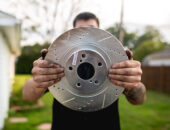
Car engines are increasingly becoming more complex, yet the basic mechanics of the engine remain same. Petrol engines still need controlled explosions of energy to get them started and spark plugs are essential to this process. Spark plugs act as the channel if the electrical current to ignite the air and fuel mixture within the cylinders. It is this continuous ignition that keeps a car moving.
Like every other aspect of the car, spark plugs need to be checked, cleaned and changed on a regular basis to remain viable. It is recommended that you change them every 12,000 miles. Failing to do so can lead to a number of problems with starting the car, high fuel consumption and even poor acceleration.
If you are experiencing these problems with your car already, here’s how to change your spark plugs as recommended by https://www.gbshowplates.co.uk
Let the Engine Cool
Your engine can get pretty hot under the bonnet, so if your car had been running, you may want to give the engine time to cool down. While you are waiting, collect the following items that you’ll need to change the plugs;
- A ratchet socket (with the extension bar is possible)
- A spark plug socket
- A spark plug gap gauge or a feeler gauge
- New spark plug
Locate the Spark Plugs
You can check the owner’s manual to find out exactly where the spark plugs are located, how many there are and the size of socket you will need to remove them. Usually, they are located where there are a bundle of wires leading to different points in the engine. They will often have spark plug covers on them, so you may have to remove the engine cover.
Once you find the plugs, number the corresponding leads to the cylinder. This is to avoid confusion as to where each lead goes when you put in the new plugs.
Check for Wear
Before you begin any actual work, you may want to check for damage. But keep in mind that things can get very dirty under the bonnet, so the plugs may be in working order even if they appear a little dirty. But if they have a white build up around the electrodes, you see signs it burning or a heavy build-up of soot, they may need to be replaced.
Remove the Spark Plugs
To remove a spark plug, gently grip the wire plug as close to the bottom as you can and gently work it off to see the plug. Fit the ratchet socket wrench to remove the plug from the housing. Keep in mind that spark plugs fire in specific order and you have to remove and replace them in the right order.
Remove them one at a time and check the gap to see if they are burnt out and need replacing.
Measure the Gap
Check the owner’s for the optimum distance for your spark plug gap and then use this information to decide if the spark plug needs to be replaced. If it is completely burnt out, put is a new one.
Inserting the New Plugs
Before you insert the new plugs you may want to check the leads for signs of wear or damage. You can use a wire brush to clean around the wire connections to make sure they are clean. Put a little bit of anti-seize lubricant on the new plug threads and then tighten them to about an eighth of a turn. Avoid over tightening as this could cause damage to the thread on the engine.



